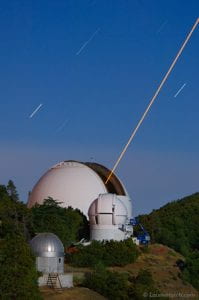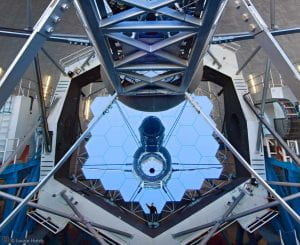Exoplanet Polarimetry: Aerosols in the atmospheres of cloudy gas giant exoplanets and brown dwarfs scatter and polarize these objects’ thermal emission. If such an object has an oblate shape or nonuniform cloud distribution, the net degree of linear polarization can show an increase ranging from several tenths of a percent to a few percent. Detecting polarized light from self-luminous exoplanets has the potential to provide key information about rotation, surface gravity, cloud grain size, and cloud coverage. In Jensen-Clem et al. 2016, I showed that GPI can probe the ~few percent polarization regime for off-axis point sources. In Jensen-Clem et al. 2020, I conducted a polarimetric survey of two planetary-mass companions and five brown dwarf companions using GPI and SPHERE-IRDIS, relating upper limits on each target’s degree of linear polarization to its rotation rate:

From Jensen-Clem et al. 2020: the dotted lines indicate our polarization upper limits while the solid lines indicate the maximum simulated polarization as a function of rotational velocity.
Directly Imaging Faint Companions to Hipparcos–Gaia Accelerators : I aim to take advantage of the treasure trove of astrometric measurements in the Hipparcos-Gaia Catalog of Accelerations to conduct deep observations of nearby systems with measured accelerations that betray the presence of an unseen companion. The first step is to vet promising nearby accelerators for stellar companions. My group is using the ShaneAO system at Lick Observatory to vet dozens of accelerators before choosing the best targets for deep observations with the Keck/NIRC2 L-band vortex. These Keck observations are already starting to pay off — stay tuned for early results to be published in Li, Brandt, Jensen-Clem, et al, in prep.
![]()

The Shane Telescope (image credit: Laurie Hatch)

The Keck II Telescope (image credit: Laurie Hatch)